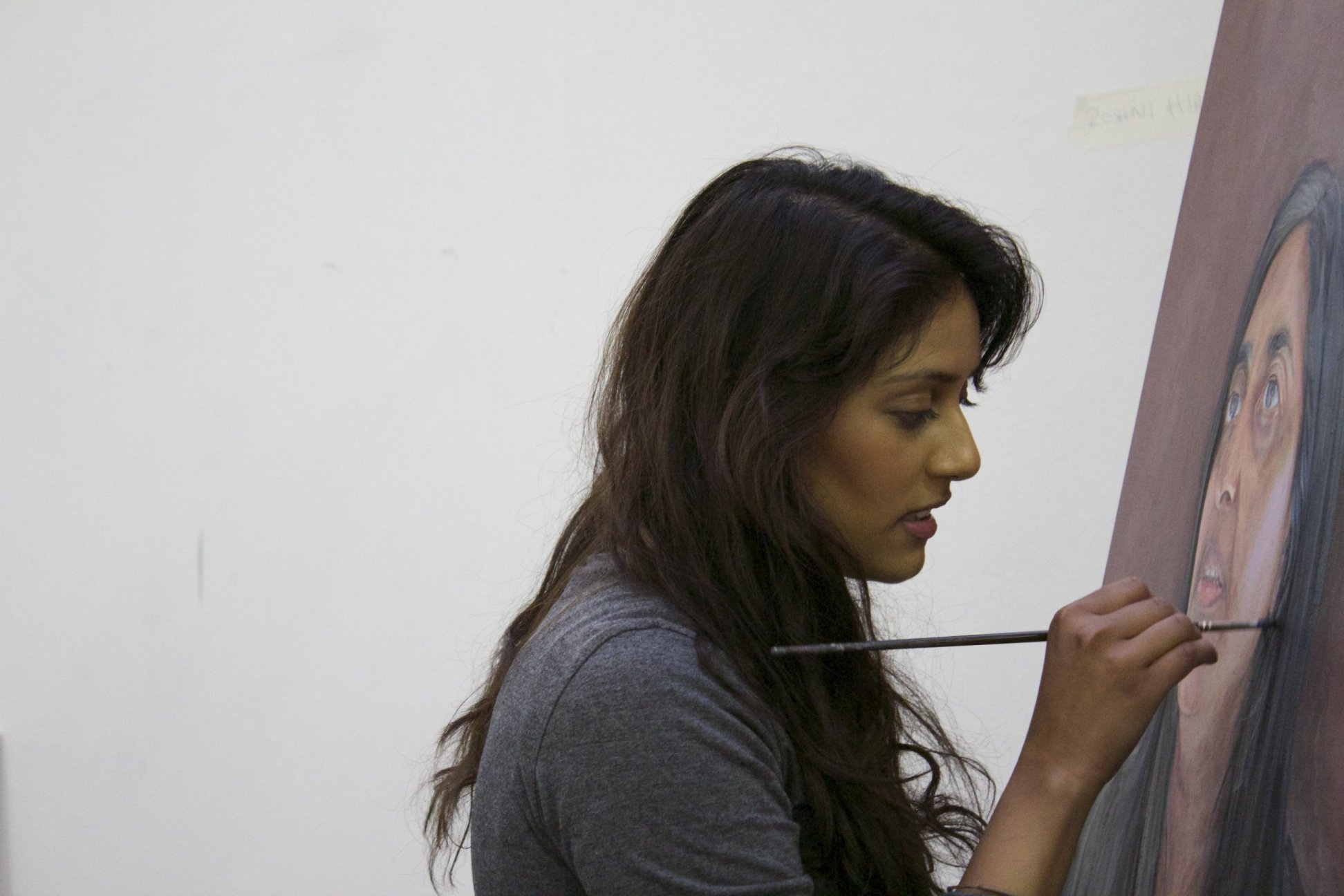
Roshni Hirani at work
A clearer career path
Cate Gordon describes how the Young Associate Scheme at Harrow Arts Centre offers a clearer career progression route for young people.
At Harrow Arts Centre we launched our Young Associate scheme in 2012 with just one young artist. It grew out of a desire to make sure there were clearer progression routes for young people engaging in our work, and to support those who wanted a career in the arts. With no clear-cut career path, it can be difficult to help young people make decisions about what to do after school or university and to begin making a living. We wanted a practical way to help those young people
The key points we considered when designing the scheme were:
- It needed to work for artists working in any of the artforms we programme;
- It needed to make best use of what we have to offer in-house (we are predominantly a receiving house and gallery, so we have different things to offer than a producing house);
- It needed to be useful and fill gaps – we wanted to include essential training, such as safeguarding, and business support, including everything from how to register as self-employed, to how to write a CV or apply for a job
- We wanted it to be exciting and a real challenge – a really inspiring CPD opportunity.
- Progression routes and peer leadership are really important to us, so it needed to make links with the rest of our participatory work and our programme.
- It needed to be focussed on the artist and their own aims and ambitions.
By the end of the year, we wanted our Young Associate to have everything they needed to feel confident about working in the arts and have a realistic understanding of what life in the arts might be like. As a result, our offer was very flexible and it was really hard to write the advert without being too vague. It included the following, but in reality was adapted and added to depending on the individual:
- Year-round access to our rehearsal and workshop spaces and office;
- Scratch and R&D opportunities;
- At least one performance or exhibition as part of our programme;
- A budget for materials and additional training we can’t provide in-house;
- Paid employment as an assistant practitioner in our participation programme;
- Training to lead an education project themselves;
- Year-round mentoring, free training and business support;
- Support to achieve the Gold Arts Award.
Structuring the scheme around the Gold Arts Award helped focus everything. It has helped me to work out realistic goals and deadlines with the artists and it has helped the artists challenge themselves. One of our current associates, Emma, said: “The Gold Arts Award has helped me push myself as an artistic leader. Having set myself challenges and goals, it has led me to lots of great opportunities I would not usually have come across.” It has given them a starting point to work from and provided an extra kind of recognition for their achievements.
Structuring the scheme around the Gold Arts Award helped focus everything
We were very lucky to receive funding from John Lyon’s Charity to support the project, as part of a wider programme of work with young people. We chose to work with young people aged 18 to 25; effectively this project is the end-point of our young people’s programme. It’s what we want younger aspiring professional artists who are taking part in our other projects to look up to and work towards.
We had never done anything like this before, so we started with one young person. We advertised the role and undertook interviews, which made sure we were a good match and that we were offering something useful to the artist we chose. In our first year, we worked with Roshni Hirani, a portrait artist. She created an exhibition for our gallery and led a project for young people over the summer holidays. She is now working as a freelance artist with galleries in London as well as with us.
In that first year, we advertised the scheme as ‘Young Associate Artist’. Although we received enquiries from musicians, all the eventual applications were from visual artists. We thought this might be down to the language we used to describe the scheme, and the word ‘artist’ was definitely picked up in local press. In the second year we cut ‘artist’ from the title which seemed to work in broadening the applications we received.
This year our two associates are Emma Norman, a visual artist and musician, and Gaby Nimo, a theatre maker and dancer. Emma has just had the opening of her first exhibition as a curator, and Gaby has a scratch performance of her new play coming up in June. The project has been an enormous success in terms of opening up the resources we have to emerging artists and has helped me see how much we have to offer that could help someone get started.
Cate Gordon is Participation Programmer at Harrow Arts Centre.
www.harrowarts.com
[email protected]
Join the Discussion
You must be logged in to post a comment.